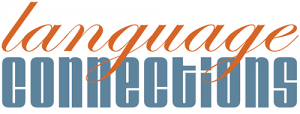eLearning translations involve more than just accurate wording. They require strong technical foundations, including platform compatibility, media localization, and robust quality assurance. Expanding your eLearning courses globally is a smart move, but only if your translations are technically sound. Without meeting these essential requirements, even well-translated content can result in frustrating user experiences. Getting the technical side right is what separates successful global training programs from those that fall short.
Learn more about our eLearning translation services and how we help clients deliver learning that works across languages and platforms.
File Formats and Compatibility Requirements for eLearning Translations
One of the first technical requirements for eLearning translations is ensuring that your content functions properly across your learning management system. SCORM, xAPI, and AICC are common formats, and translated versions must preserve these structures. If not, course functionality may break, leading to issues like faulty navigation or incomplete progress tracking. To avoid this, choose eLearning authoring tools that export formats like XLIFF or XML, which are ideal for translation workflows. Partner with an experienced localization services company that can translate SCORM packages and support LMS integration in each target language.
Managing Multilingual Media Assets
Another critical requirement is planning for the localization of all media elements—not just the text. Voiceovers, subtitles, and on-screen graphics all need to be adapted for different languages and cultures. Many organizations focus solely on translating scripts but overlook the importance of timing, tone, or culturally appropriate visuals. To avoid these challenges, choose a vendor that offers comprehensive video translation services along with eLearning content localization. This ensures that every visual and audio component is synchronized and effective in the target language.
Text Expansion and Layout Requirements for eLearning Translations
Translating from English into languages like German or French often results in text expansion, increasing word count by 20 to 30 percent. This can break your interface or distort the layout of your course, particularly on mobile devices. One of the most commonly overlooked requirements for eLearning translations is layout flexibility. Design your courses with scalable layouts, avoid hardcoded text on buttons or images, and use editable content containers. This preparation saves time and reduces the need for costly rework.
Functional QA and Localization Testing
Even if a translation is linguistically perfect, technical problems can still arise. Buttons may stop working, videos might fail to play, or navigation can become inconsistent. This is why functional quality assurance is a critical part of the education translation services process. Your provider should thoroughly test the translated course on multiple platforms and devices, reviewing everything from design consistency to interactive functionality. A reliable vendor will only launch a course once they’ve verified that everything works exactly as intended.
Terminology Management and Scalability for eLearning Translations
As your training content expands, maintaining consistency across translations becomes increasingly important, especially in technical or highly regulated industries. Businesses should prioritize centralized glossary creation and translation memory management. An experienced provider of translation services will incorporate these tools from the beginning, ensuring consistent terminology across all modules, updates, and languages. This scalability is essential for supporting the growth of international training programs over time.
Conclusion
Meeting the requirements for eLearning translation is not just about avoiding errors. It’s about creating engaging, high-quality learning experiences for global audiences. From platform compatibility and media localization to scalable workflows and comprehensive quality assurance, every detail plays a role. By working with a trusted partner like Language Connections, you can ensure that your multilingual training programs are built for success, enabling learners everywhere to engage with, understand, and retain your content—regardless of language.
Language Connections Inc.
22 Goddard Circle
Brookline, MA 02445
Phone: +1-617-731-3510
Email: service@languageconnections.com


